Doubled Die Class 2 (Distorted Hub Doubling)
Here we have 1971P DDO-001 (1-O-II-E); the design elements inside (closer to the center) have a lighter hubbing, and may very well have been hubbed first, meanwhile the design elements nearest the rim are deeper and might have been hubbed second.
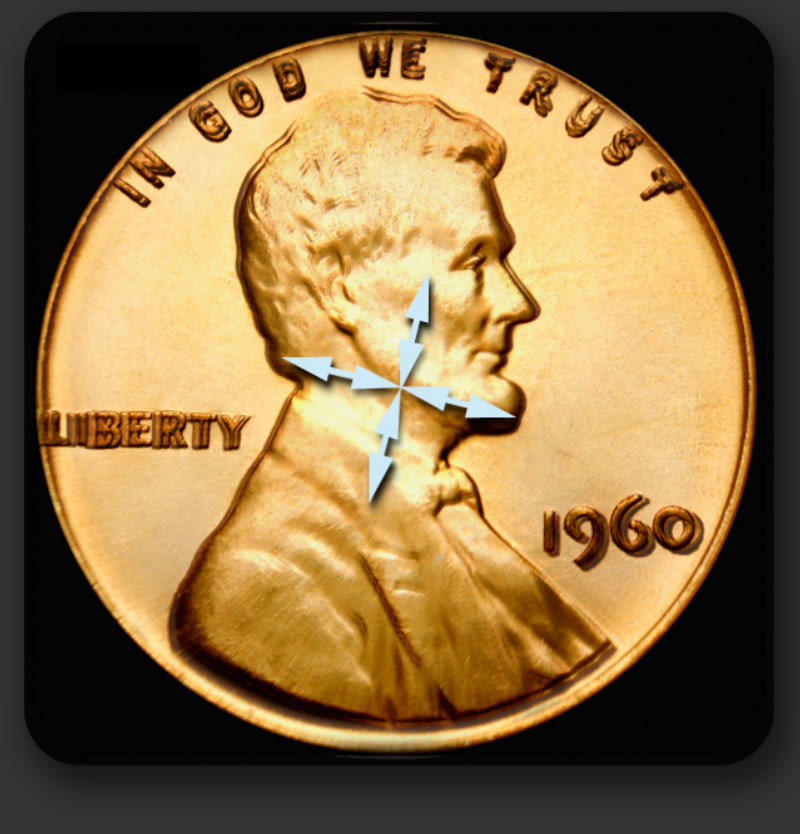
Let’s clarify the direction of the spread. Here we have 1971P DDO-001 (1-O-II-E); the design elements inside (closer to the center) have a lighter hubbing, and may very well have been hubbed first, meanwhile the design elements nearest the rim are deeper and might have been hubbed second.
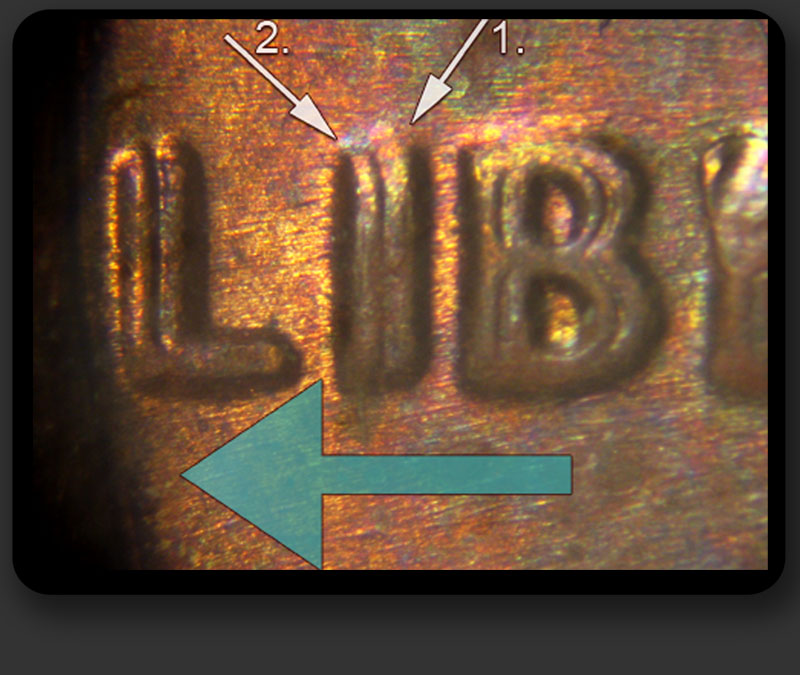
The critical point is the order, lightest to deepest that determines the direction. In the above examples, (1.) is closer to the the center and is lightest, while (2.) is deeper and near the edge. Doubling is not always consitant and is hard to explain why as evidenced by the light north spread on the date seen below.
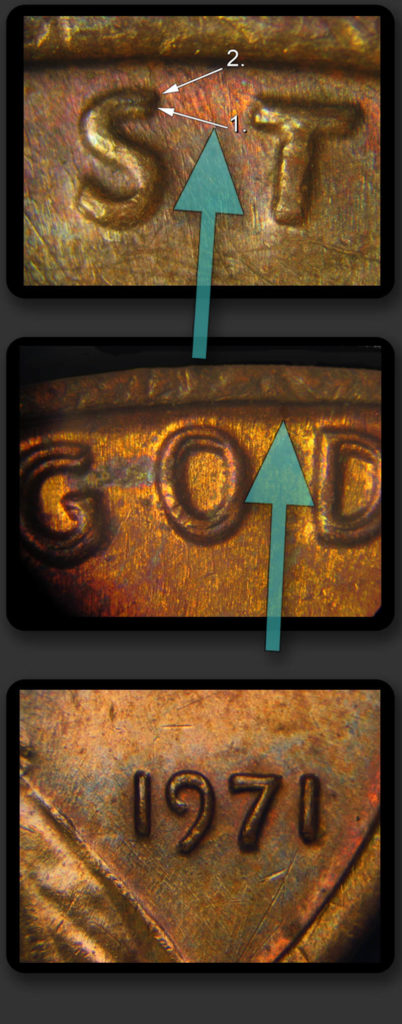
The inverse direction is shown below: 1985P DDO-001 (1-O-II-C) which shows the outer impression, closer to the edge (1.), being hubbed lighter while the inner impression, closer to the center (2.), was hubbed more deeply.
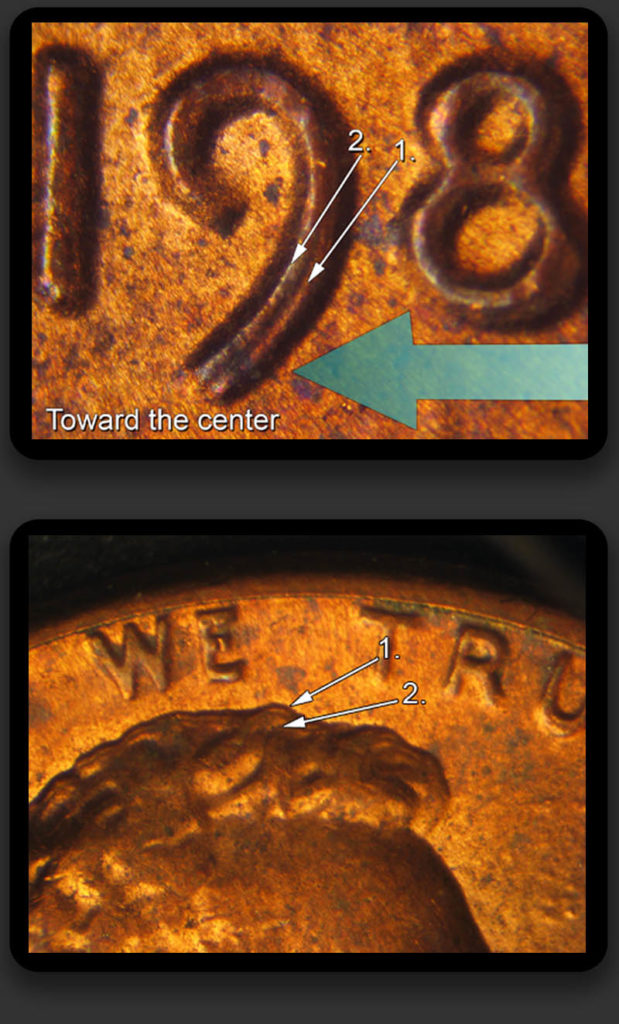
Below the closeup of the ’85 date area is another illustration showing two hubbings spread toward the center (C) on a ficticious 1985-D cent (similar to the ’85 ). The lighter impression is the outer impression (red), and the inside depper impression (green).
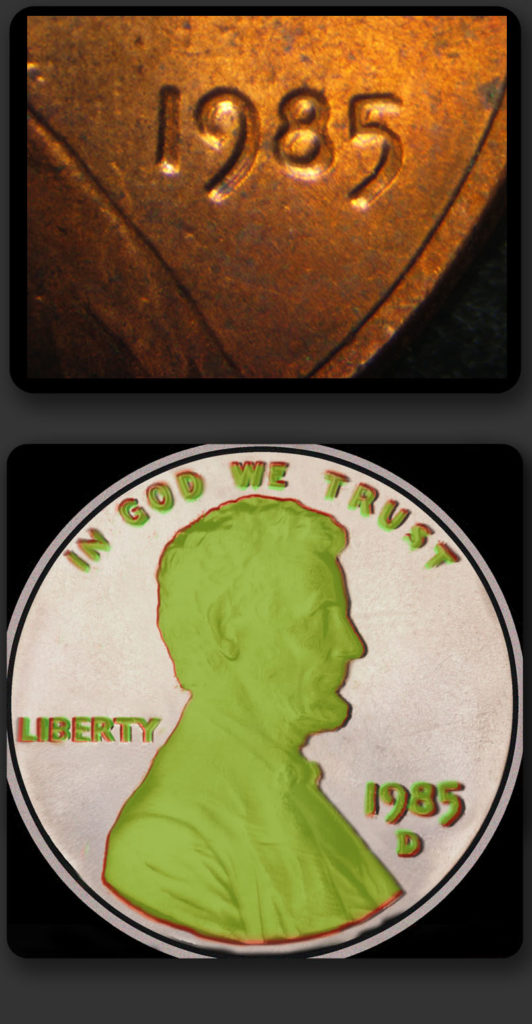
1985 DDO-001 and 1984D DDO-001 (illustrated here) both show, to a degree, how far into the design Class II doubling can be present in that the upper regions of the hair and the lower bust are clearly doubled as well. And where are the rest of the doubled devices? As with Class I and V, the doubling is more pronounced on the outer edges. The inner design elements would have both been barely doubled and the second hubbing would have likely obliterated iwhat little may have shown.
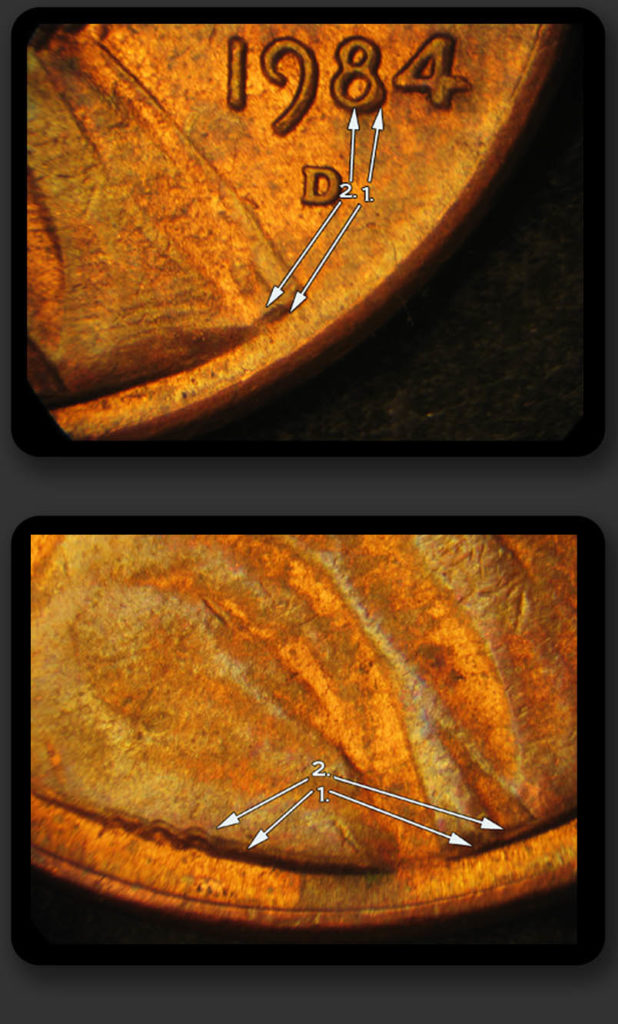
Is it the Hub or the Die which did not return to its original diameter? Arguments have been made that Class II (or Class VI) Doubled Dies are in part or wholly from a Distorted (or Distended) Hub. The obvious counter argument is: if the Hub were responsible, there should be many, many similar Doubled Dies showing almost the exact same doubling. In 1971, on business strikes, there has only ever been one Class II DDO identified. With such an extreme change in diameter as evident in the spread in LIBERTY, surely there would be lesser hub doubled dies leading up to the distortion seen on DDO-001 if it was Hub involved- wouldn’t it? However, there are an unusual number of Class II Doubled Dies in certain years such as the Lincoln cent obverse in 1962. I am not aware of there being evidence of a single Hub being part of the equation. A die marker linking the Hub to the various dies would be a start followed by an examination of normally hubbed coins, where in the case of the distorted Hub, producing Dies which exhibit a design spread closer to the edge baring the same marker(s) is identified.
Our next example is 1964P DDR-020 (20-R-II-C) (coin courtesy Chris Welch); which as the designation states, is spread toward the center. However, in this case there is another level of distortion in that that lighter (outer) impression is oddly narrower. This is almost opposite of the situation with a related class of Hub Doubling (Class VI, Distended Hub Doubling) which is characterized by an increase in thickness toward outside devices.
There are a number of other Class II DDRs in 1963-64 and one wonders if maybe, here somehow the Hub was involved..

Here we can see a Jefferson nickel listed as 1962P DDR-015 (15-R-II-C) with a medium spread on the reverse that is visible on most devices. The doubling is more pronounced near the rim and gradually decreases as we navigate toward the center. Notice how light the spread becomes on FIVE and the beginning of MONTICELLO.
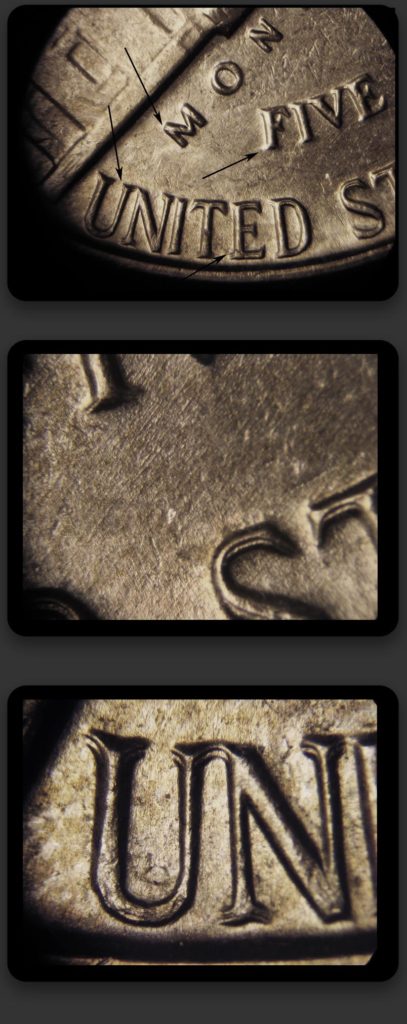
Not to be forgoten are the notches, both the Jefferson above and the Rosevelt 1964 DDO-001 below, show nice notches at the serifs. 1964 DDO-001 also exhibits a doubled forehead, but shows very litle on the date.
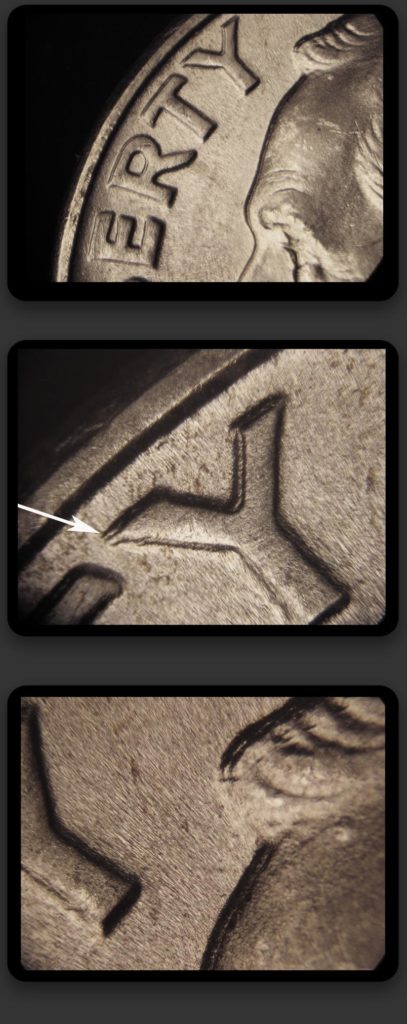
Class 1, Rotated
A class I doubled die results when the die receives an additional hubbing that is misaligned in a clockwise or counterclockwise direction.
Class 2, Distorted
A class 2 doubled die results when the hub’s design moves toward the rim between hubbings.
Class 3, Design
A class 3 doubled die results when a hub bearing a different design stamps a die bearing another design.
Class 4, Offset
A class 4 doubled die results when the die receives an additional hubbing that is misaligned in an offset direction.
Class 5, Pivoted
A class 5 doubled die results when the die receives an additional hubbing that was misaligned via rotation with a pivot point near the rim.
Class 6, Distended
A class 6 doubled die results when the die receives an additional hubbing from a hub that was distended.
Class 7, Modified
A class 7 doubled die results when the hub is modified between the die’s hubbings (e.g., a design element was chiseled off).
Class 8, Tilted
A class 8 doubled die results when a die and/or hub is tilted during a hubbing.
